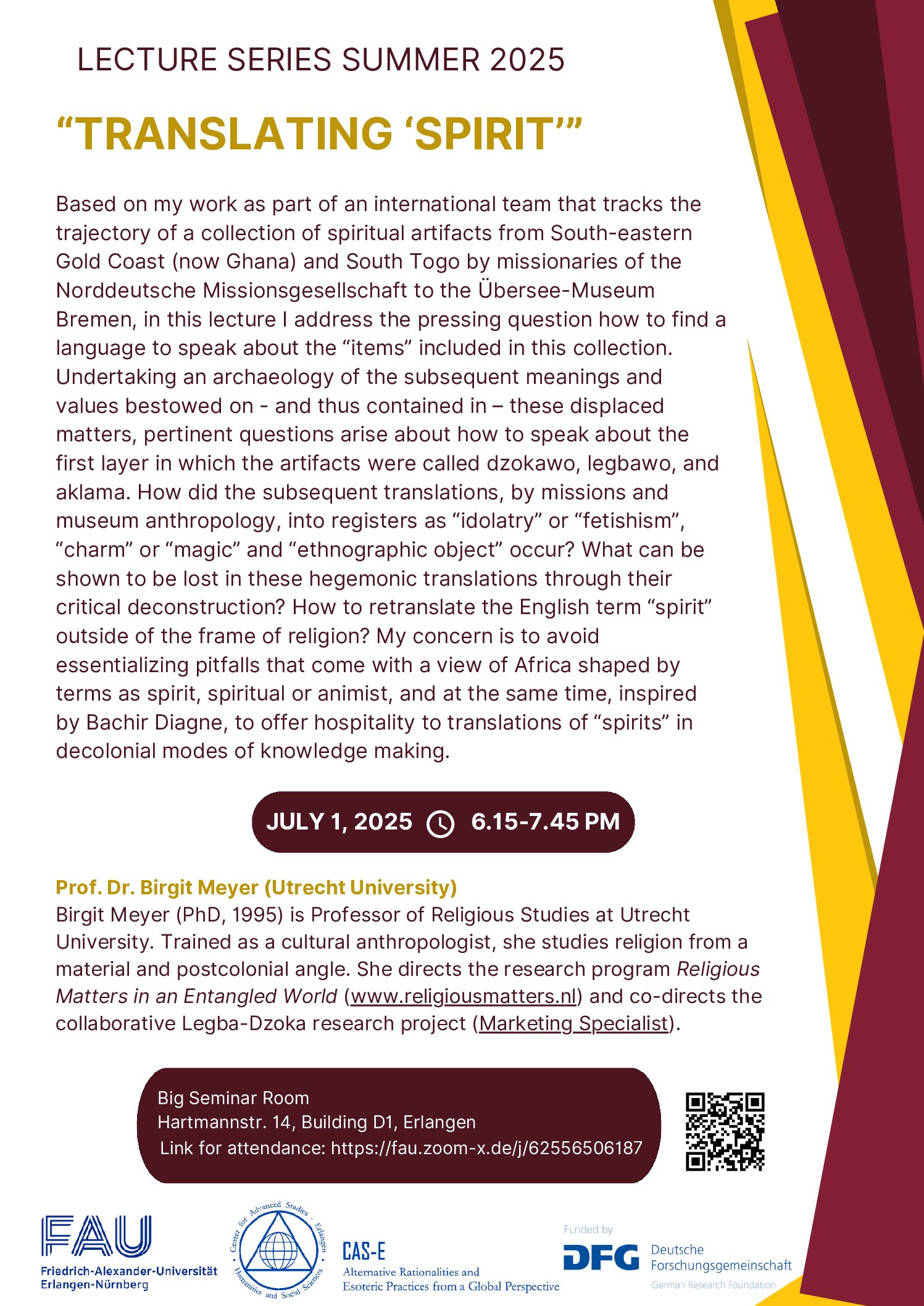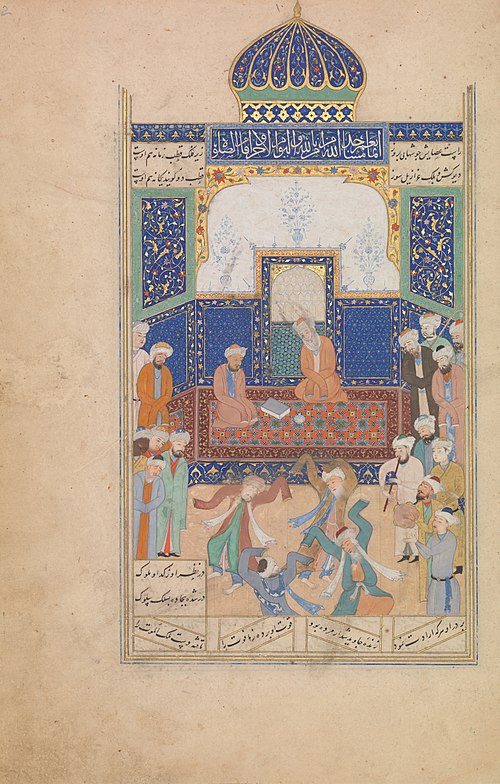Eszter Spät
I first started my field research among the Yezidis, a Kurdish-speaking ethno-religious minority of Northern Iraq, in 2002-03. At the time, it did not even occur to me to enquire about such “esoteric” practices as (written) amulets, or about seers (koçeks), who communicate with the “supernatural world,” that is the batinî (hidden, esoteric) realms. I had never heard of or read a reference to Yezidi amulets, while the seers were widely considered a thing of the past. My interest lay in the more “formal” aspects of Yezidi religion, especially the orally transmitted textual tradition. My first year “in the field” (and I have to put that in quotation marks, because I spent more time learning Kurdish, and teaching English in order to finance my stay in Iraqi Kurdistan, than doing research in the strict sense of the word) was one of frustration. I could find hardly any Yezid religious experts, I missed ritual after ritual for lack of information, I did not know how to make contact with village Yezidis (rather than the urbanized middle class), and those people who were willing to talk to me about Yezidi religion often gave me what appeared to be a strange, re-created version of Yezidism, designed to meet modern “scientific, philosophic and humanistic” standards, as well as the elevated status of Yezidism as the “original Kurdish religion” in Kurdish nationalist discourse. It was only later on, once I was back from the field and reflecting on the material I had collected, that I realized that what I had was a fascinating glimpse into the ongoing scripturalization of Yezidi religious oral tradition, that is, the process of transforming an oral religion into a bookish one.

When, after finishing my PhD, I returned to Iraq in 2011 to continue my research, I decided to go in this direction and concentrate on various aspects of the scripturalization process. At the same time, as I was going to be a guest member of the “Ritual Dynamics” Collaborative Research Center project at Heidelberg University, who focused on the topic of “space” that year, I was also trying to collect some material on the concept and usage of Yezidi sacred space. This latter topic quickly took me to the question of faith-based healing, as different Yezidi sacred shrines (or rather, the holy being they are dedicated to) specialize in healing different ailments. I was astounded to find that to my question “how did you know where to go,” again and again I received the answer: “a koçek told me.” I soon realized that between my two visits a veritable explosion of seers had taken place, and their numbers was growing almost day by day. A few of these seers were around before 2003 (under Saddam), but tried to keep a low profile, most of them appeared only in the post-Saddam years, mostly around 2010. They no longer felt the need to hide, either from the authorities or from their fellow Yezidis, and their (spiritual, social and material) success no doubt attributed to the emergence of even more seers.

Kochek Dawud (Image Credits: Ester Spät)
Immersing myself in the world of seers and the terminology associated with them was a challenge. The koçeks of the Sinjar region (near the Syrian border) are cinndars, which could be translated as “possessors of jinn.” Cinndars owe their special abilities to the jinn serving them. It was harder to grasp the concept of a delîls, or guides, entities of the batinî (hidden/esoteric) world, through whom the Yezidi seers living east of the Tigris communicate with the supernatural. It is the delîl who decides when a seer has reached (through physical and mental suffering, or cor)the level when they can receive the permission (destûr) “to sit down” (rûni) and “look” for clients who come to them seeking answers to and guidance on various troubles and aspirations. It was even harder, at first, to make sense of the expression, “to fall into/read book” (defterê keftin/xwandin), which refers to an altered state of consciousness, where the delîl speaks through the seer. It is “in book” that prophecies are received, moral exhortations addressed to the Yezidi community are uttered, or on a more practical and mundane level, answers to the queries and everyday concerns of clients are sought. Just as the delîl is an entity from the batinî world, so is the defter or book described as batinî, emphasizing its esoteric or divine nature.

While on my quest for seers and healing (as well as researching my parallel topic, bookishness within the framework of a traditionally oral religion), I eventually learned about another form of consulting, or rather communicating with the spiritual world, with the aim to heal and solve problems: the Book of Angel Sheikh Sin. This manuscript, “copies” of which exist in the possession of perhaps half a dozen (or less) families from the lineage of the Sheikh Hassan (human incarnation of the divine essence of Angel Sheikh Sin), is used to seek spiritual cure and the creation of (prophylactic) amulets (nivişki).
Fascinated by the topic, I studied the renaissance of the seers, the various ways their vocation manifested in “shamanic sickness,” how they gave a voice to the “subaltern,” and the reaction of Yezidis (of different age and social background) to their emergence. I attended the diwans of koçeks, where seers fell into book in front of a simultaneously excited and scared audience, and listened to their prophesizing. I listened to koçeks receiving their clients and giving divinely inspired advice. I asked around about written amulets, the ways to create them, and how they served Yezidi society. It was only after extended research that I realized that the topic of seers (with their peculiar terminology) and of amulet-makers was in fact deeply tied to my other, “official” topic, the interaction between religious orality and scripturality, and the attempts to present Yezidi religion as one in no way inferior to “bookish religions.”

In a region, where for a long time only religions with written, revealed books were considered legitimate religions with a claim to legal protection, and where the social marginalization of a religion without books still continues, presenting Yezidism as “bookish” was of immense importance. Over the centuries, various strategies were designed to achieve this end. Looking at things from this perspective, the language used to describe the activities of Yezidi seers, and the way Yezidis’ “sacred book” is used – for creating amulets and answering questions rather than for transmitting and spreading religious knowledge – gained a new meaning and relevance. Through their connection to the book (and the acts of reading and writing), the practitioners of various Yezidi divinatory traditions do not merely serve the individual needs of their clients; rather, they put Yezidi religion on equal footing with religions of written sacred books in the eyes of the Yezidi community. In fact, one may say these practitioners demonstrate that Yezidi religion is superior to other religions, as their “books” provide a continuous, constant source of revelation, unfinished and unbound, unlike the books of the bookish religions.
#
Eszter Spät, a historian, is presently a visiting fellow at the Center for Advanced Studies – Erlangen. She specializes in the cultural study of the religious minorities of the Middle East. She has been carrying our field research in Northern Iraq since 2002.
CAS-E blogs may be reprinted with the following acknowledgment: “This article was published by CAS-E on November 3rd, 2025.”
The views and opinions expressed in blog posts and comments made in response to the blog posts are those of the author(s) and do not necessarily reflect the views and opinions of CAS-E, its founders, its staff, or any agent or institution affiliated with it, nor those of the institution(s) with which the author is affiliated.








